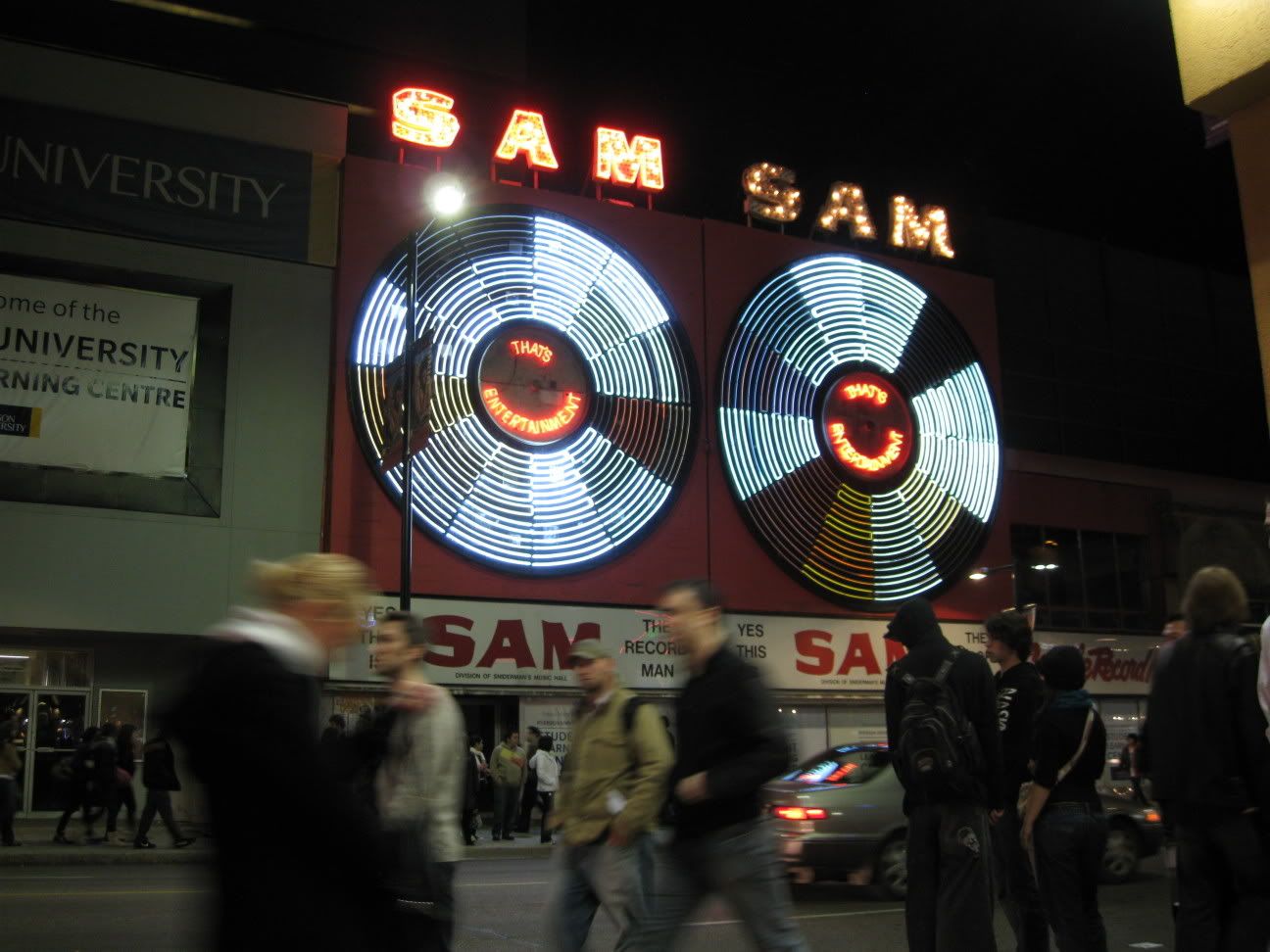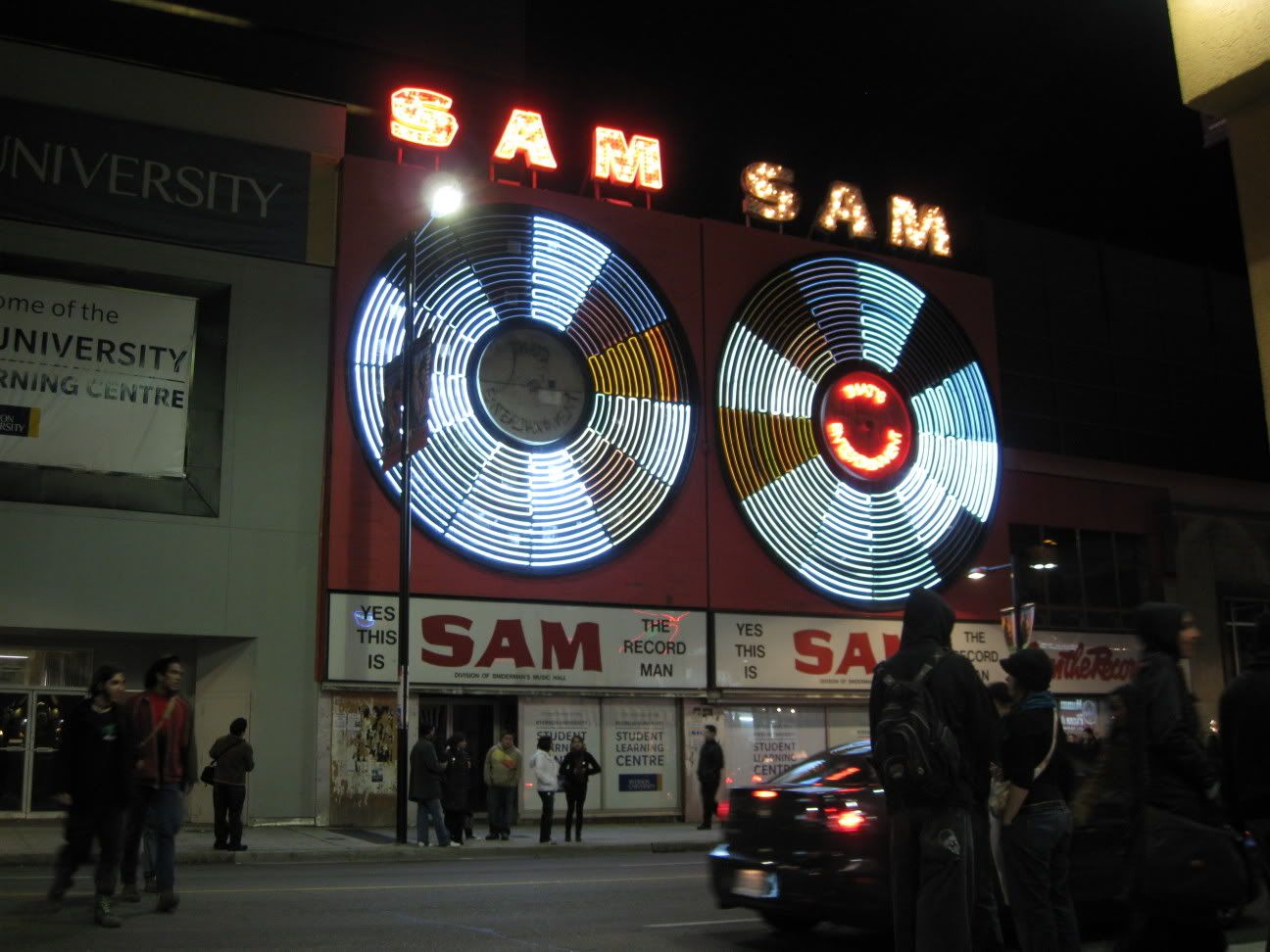http://www.thestar.com/GTA/Columnist/article/512263
Minds are open to Nuit Blanche but streets aren't
Oct 06, 2008 04:30 AM
Christopher Hume
If anything, Nuit Blanche may have become too successful.
In three short years, the all-night "contemporary art thing" has grown to the point where hundreds of thousands of people participate. According to CBC Radio, no fewer than one million attended between Saturday evening and Sunday morning.
It's not hard to understand why; unlike any other cultural event, Nuit Blanche is based on the transformative power of art. This may not be something the Stephen Harpers of the world grasp, but to most of us, it's obvious.
And what makes Nuit Blanche especially compelling is that the object transformed was nothing less than the city itself, Toronto.
Freed from the confines of the gallery, the museum, the woolly thinking of the curatorial elite, artists are able to perform magic on buildings, places and whole neighbourhoods. These form the very world we Torontonians inhabit.
That tired old question – Is it art? – no longer matters.
At the same time, however, it's become painfully clear that official Toronto doesn't have a clue what's going on. Mayor David Miller talks predictably and patronizingly about "how powerful and beneficial our partnerships with the artistic and corporate communities can be," as if what's important is that there's a bank willing to sponsor Nuit Blanche.
That's hardly the point. The truth is that business has much more to gain from Nuit Blanche than Nuit Blanche does from business.
And what about the city's role in Nuit Blanche? His Worship claims that last year the event attracted "a groundbreaking audience of 800,000." By any measure that's a lot of people. How strange, then, that although the streets of Toronto thronged with huge crowds throughout the night, it was business as usual as far as city hall was concerned.
In other words, with the odd exception, roads were still open to traffic and pedestrians were expected to make ways for cars. Not even for one night, 12 hours, could civic leaders give the streets to the people. To be honest, it's amazing no one was hurt.
As far as civic officials are concerned, nothing must be allowed to slow the flow of traffic. All that blather about pedestrian charters, more bicycle lanes and enhanced public transit adds up to precisely nothing. What counts here is the car.
And what about the TTC? True the commission managed grudgingly to extend selected routes into the night, but the service should have been free and there should have been more of it. Who knows, perhaps the TTC would have attracted new riders by using the occasion to show how convenient and efficient it is. (On the other hand, it's more likely those one-time passengers left the subway happier than ever to get back into their cars.)
Above all, Nuit Blanche revealed the growing gap between the people who live in this city and those who run it. Torontonians are light years ahead of their leaders in understanding what it means to inhabit an urban centre. And unlike the nabobs, residents are well aware that the 1950s are over.
Ultimately, the most compelling aspect of Nuit Blanche was not the artworks, but the glimpse they offered of the city that Toronto might be. That was the exciting part. For a few spectacular hours, Toronto wasn't simply transformed; it was transcendent. Places so familiar they were invisible suddenly seemed fresh and fascinating. Even that meanest of heaps, Maple Leaf Gardens, acquired new vitality.
Then there was City Hall itself, remade by a German art collective into an interactive light show. Never has the seat of civic democracy seemed more alive, responsive or engaging.
*****
Here's my take...
I attended Nuit Blanche for the first time this year, and I was very pleased with the experience. I think the amazing thing about Nuit Blanche has nothing to do with the art, but rather the transformation of public spaces in Toronto that we have always been familiar with into something strange and other-worldly. In that way, Nuit Blanche was a success.
However, throughout the night I've heard discussions from just about everybody about the definition of art. While everybody enjoyed seeing Toronto's public spaces in a different light, I found that most people didn't seem to "understand" the art (most were saying "That was it?" or "What was that all about?" after looking at an installation), or were poking fun at the art (saying "That's art!?" or "I can do better than that!"), myself included. For many, maybe Nuit Blanche is not really a night to enjoy art, but more a night to "see and be seen".
With that reaction from the crowd, perhaps it's time for the artists to start educating the average Torontonian about how to appreciate art. Or, maybe it's time for Nuit Blanche to redefine itself, not only as an arts festival, but also a festival celebrating Toronto's public spaces.
I'd also like to see Nuit Blanche contribute permanently to Toronto, seeing how people are wowed by the transformation of public spaces. I think the organizers (or the city) should set a goal, say a percentage, of Nuit Blanche installations that can remain after the festival as permanent public artwork, either at the location it was installed for Nuit Blanche, or another location.
Like Hume and interchange42, there should definitely be better planning of transportation on Nuit Blanche. One idea I have is to shut down Adelaide and Richmond streets during Nuit Blanche to divert pedestrians traffic from Queen, since I saw that both streets were pretty empty that night. Perhaps the crowds could be attracted to both streets with some big art installations.






